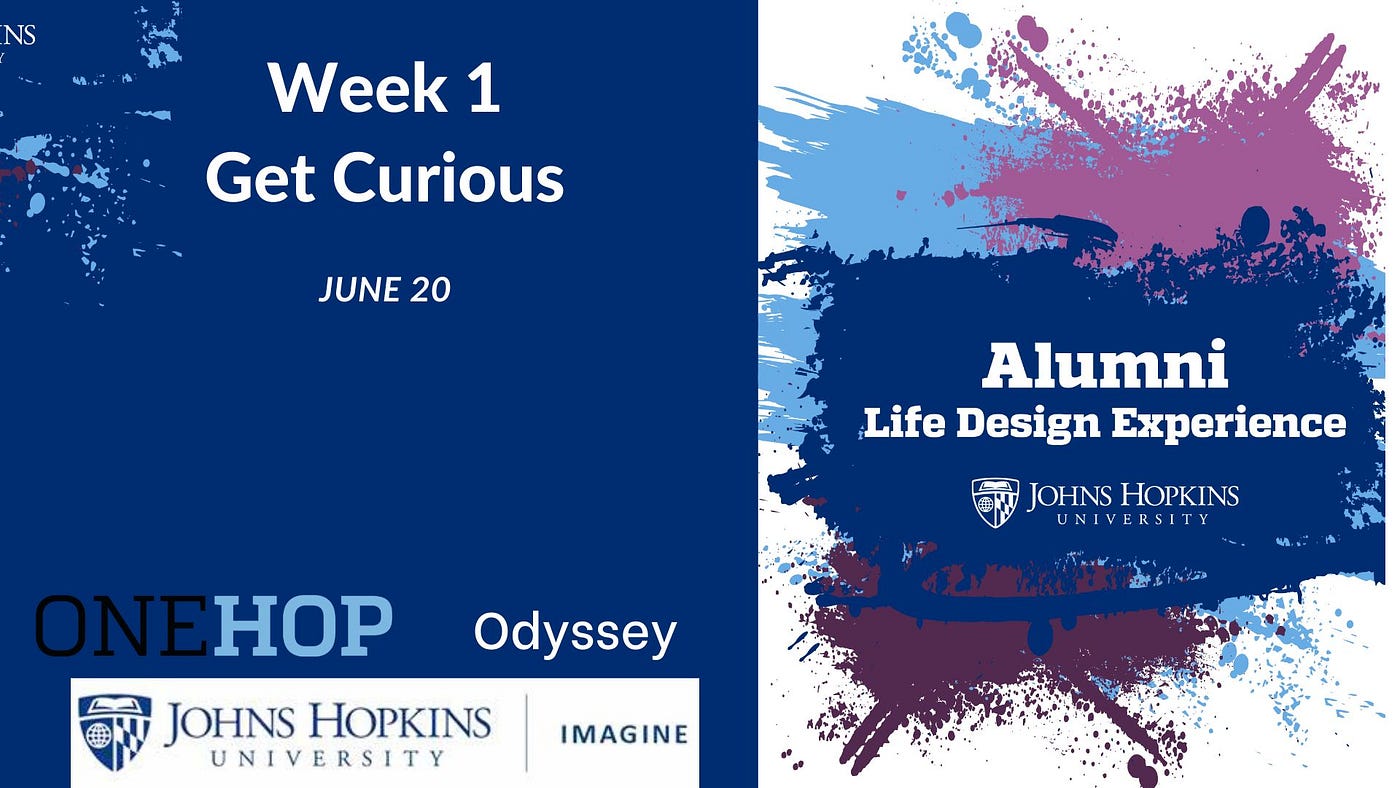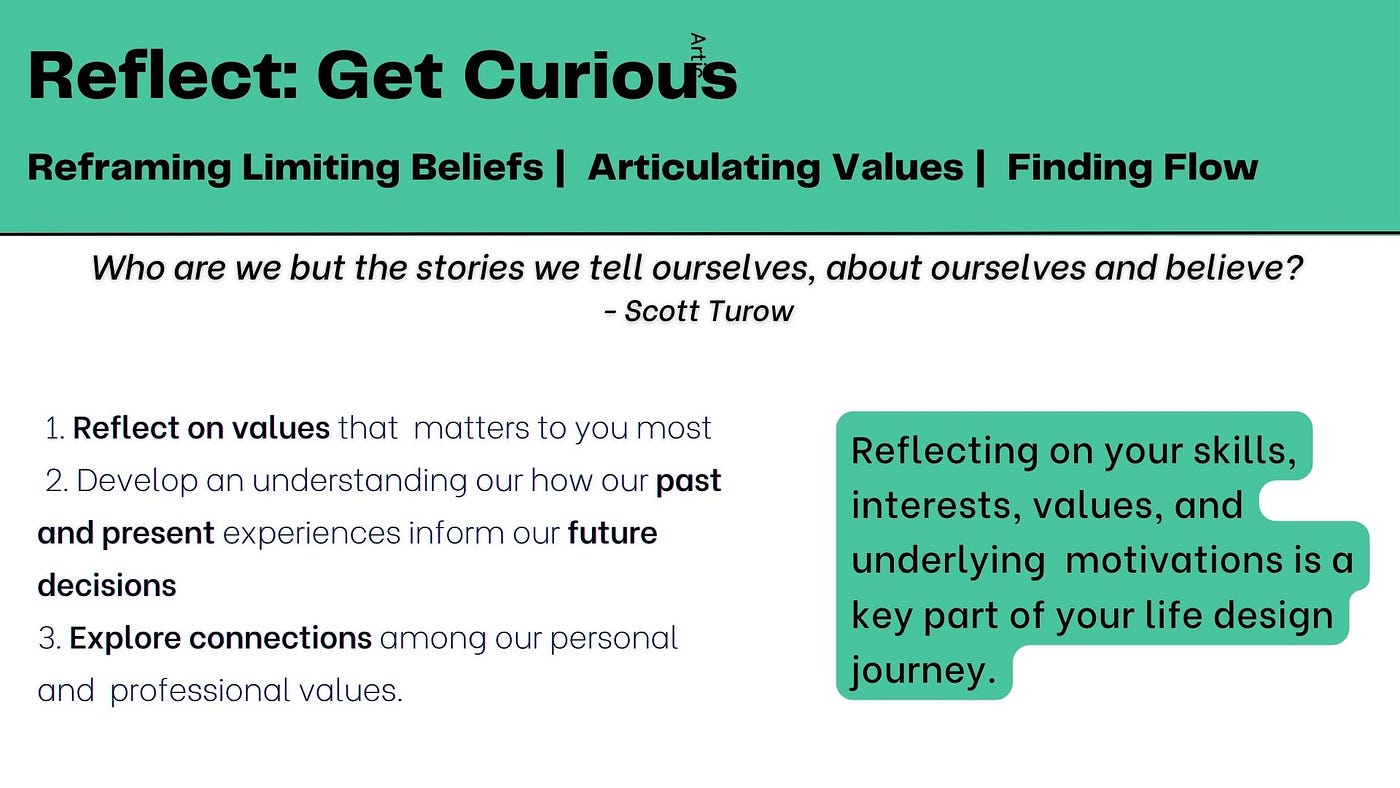“The most reliable way to achieve a breakthrough is getting stuck and unstuck over and over again.” — Adam Alter, Anatomy of a Breakthrough (2023)
I’m not a therapist. And yet, I spend a good portion of my day listening to others who feel stuck in some part of their lives. They don’t want me to fix it for them. They do want tools and confidence to take the next step, whatever that step may be. And this need seems only to be growing stronger. The students and alum I meet with range in age from 17 to 70 and come from every social, economic, geographic, and professional background. One might assume they have little in common. And when they first meet each other in a classroom setting, they tend to agree. Then, they begin talking to each other.
One thing participants of a life design course have in common is the belief they are alone in their fears and self-doubt. Psychologists call this pluralistic ignorance, when members of a group falsely believe their thoughts or behaviors are systematically different from those around them, causing them to feel increasingly isolated and unable to act. This “stuckness” can make it feel nearly impossible to move outside our familiars, to try something before feeling fully ready to take the leap (personal note: though I’ve recently taken a leap myself, I’m still waiting to feel ready).
In his 2023 book, Anatomy of a Breakthrough, Adam Alter defines this feeling of stuckness as being (1) temporarily unable to make progress in an area of our lives that’s important to us (2) fixed in place long enough to feel discomfort and/or (3) aware that our current thoughts and habits aren’t solving our problem. The most effective way I’ve found to show my students they’re not alone is to expand their perspective by connecting them to people who can help them see themselves and their skills more accurately. When individuals become part of a community that can be open about sharing these complex questions and doubts, they can also begin focusing on what matters to them. By recognizing what keeps them stuck, they begin to challenge long-held beliefs that prevent them from making tangible change while acknowledging the ambiguity that is living.
At Johns Hopkins University, there’s a place devoted to this kind of work called the Imagine Center of Integrative Learning and Life Design. The primary mission of our Life Design Lab team is to use the framework and mindsets of design thinking to empower Hopkins students to get curious about themselves and their potential, to build new and diverse connections, and to begin crafting their stories with creative confidence. When my colleague, Michael Gonzales, asked me to teach a pilot course called Alumni Life Design Experience (ALDE),* I jumped at the opportunity, eager to learn from alum at various stages of their careers and to hear their unique stories.
Here are some of my takeaways from our first week together.
Week 1: Get Curious

Before our first session, participants received a printed ALDE guidebook designed to supplement our bi-weekly synchronous sessions. My role would be to make this material relevant to this specific group of alum, to show a few dozen virtual strangers they have more in common than they might think, that they are valuable resources to each other, both during and after our time together.

Over the course of five weeks, alumni from various JHU programs and majors met twice a week to identify their core values, reframe their limiting beliefs, imagine possible lives different from those they were currently living, build connections with other alum, and craft their stories in ways that would bolster their resumes and performance in job interviews. Creating a safe space where all of us could be vulnerable about our struggles would be critical to creating a sense of belong among such a diverse group. In fact, this vulnerability ensured we made the most from our time together.
Using a brief pre-course survey, I learned about their interests, musical tastes, and where they were feeling stuck. I also learned many didn’t feel they belonged in this cohort, which was made up of artists, consultants, teachers, parents, entrepreneurs, and numerous other career paths. Based on their honest responses and our conversations during and outside our sessions, I discovered participants were skeptical but optimistic, high achievers, caregivers, world travelers, in moments of transition, experts in your field, and not easily daunted.
At our first session, participants were understandably hesitant about what to expect from our time together. They had yet to see how their distinctive experiences and personalities would come to shape what this experience would become. After some simple, story-based icebreakers, I asked them to respond to a 2-minute video by Alan Watts called “Life and Music” to access the stories of success they heard growing up and how these stories had shaped their understanding of success over time.
Then, we turned to the limiting beliefs that keep us stuck, unable to try something new or risk possible failure. Here were their broad-stroke sticking points:

With these shared challenges in mind, we considered the limiting beliefs we held about ourselves and our abilities. How might we reframe these beliefs to make room for change by replacing a fixed mindset with one of growth and potential? For example, one of the small group breaks created this reframe:

By bringing these beliefs to the surface and exposing their inadequacies in small groups, many began to feel more confident sharing their discoveries within the larger group. This mostly happened in the chat, at first. But gradually, as one after another unmuted themselves to share what they’d learned in their breakout groups, others were emboldened to share their own takeaways.
This first week focused on encouraging a radical acceptance of our stuckness, the limiting beliefs that keep us stuck, and the core values that can allow us to break through, to reframe our fixed beliefs and discover new ways to move outside our comfort zones. Participants began a “flow journal” of activities that energized and engaged them that week. They identified their top Core Values. And they took first steps in finding others in the cohort they wanted to continue learning from outside of class.
One of the biggest surprises of Week 1 was how willing this group was to be vulnerable with each other, especially when it meant another person would feel validated and supported by what they shared. This wasn’t easy work. I struggled myself to do this on my own and only succeeded when I found a group of people I trusted to design our lives collaboratively. But I also knew the dynamic of Week 1 could change, that the pressure participants were facing in their personal and professional lives could very likely make it difficult to maintain this momentum. And yet, this early display of mutual support had set the stage for Week 2: Imagining Lives We’ve Yet to Live.

*Alumni Life Design Experience (ALDE) is a collaborative effort among Johns Hopkins Alumni Association/ Lifelong Learning, OneHop Mentoring, and the Imagine Center, led by Farouk Dey, Vice Provost of Integrative Learning and Life Design. Our team of experts (Casey Miller, Janine Tucker, Brian Davis, Michael Gonzales, Heather Braun) specializes in mentorship, development, alumni relations, and life design. ALDE’s mission is to connect Hopkins alum from around the world seeking to make personal and professional changes by giving them tools for getting unstuck and moving forward despite uncertainty.

